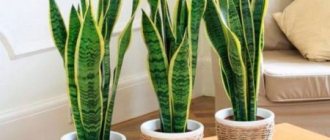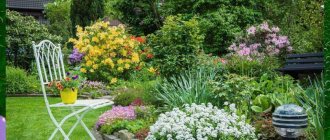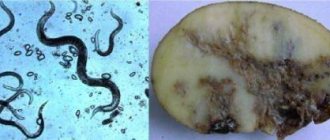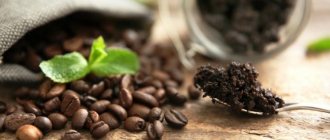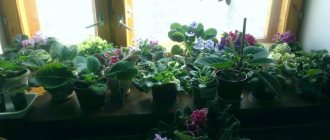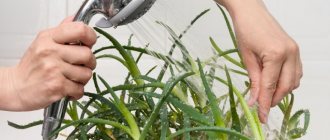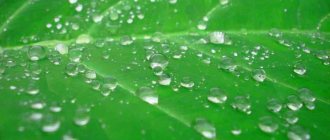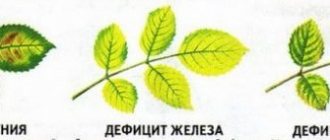Biological role
Vitamins are organic compounds that perform important biological and biochemical roles. Initially, biologists considered them necessary only for animal organisms, but now there is no doubt that plants also need them for normal life. These substances are synthesized from inorganic elements inside flowers, but can also be absorbed in ready-made form.
Vitamins are needed in minimal quantities; they are not needed to build new cells and do not increase energy, but their main function is to establish normal metabolism. It is clear that without this it will not be possible to properly increase the green mass, transfer the generated energy and perform all natural functions.
These organic compounds differ in their formulas. In nature, they are more likely to reach the roots than when grown indoors. At home, when a flower grows in a limited volume of soil, vitamins can only get in one way - if a person adds them to the water.
With vitamin deficiency, there is a disruption in the transfer of all necessary substances through cell membranes. This means a deficiency of all important elements, a slow deterioration in the condition of the plant until its death.
general characteristics
To eliminate parasitic fungi, special preparations were developed - fungicides. The literal translation from Latin means “to kill mushrooms.” These substances are not only of chemical, but also of biological origin, and they fight exclusively against plant diseases.
Today, many fungicides are combined; they contain several active ingredients that are effective against different classes of fungi. Since the effect of one substance often extends only to a single group of pathogens, the drug is completely ineffective against others.
Forms
Vitamins are often included in complex fertilizers or stimulants sold in flower shops. But you can also use pharmaceutical drugs, since in this form they are much cheaper.
All vitamin groups are divided into fat-soluble and water-soluble. The plant organism absorbs and transports mainly water-soluble ones. These include the following categories:
- complex B;
- C (ascorbic acid);
- PP (nicotinic acid).
The need for these compounds differs at different stages: for example, during seed germination the most vitamin preparations are needed, but they are synthesized inside the seedlings themselves, since the plant is not yet able to take them from the outside due to the lack of suction roots. Also, when growing in unfavorable conditions, a flower may need more than when living in a good environment.
Functions
Each vitamin has its own effect, but ultimately, vitamin deficiency always manifests itself externally in slower growth, the appearance of smaller leaves, shedding of buds, inflorescences, leaf blades and unripe fruits.
But scientists have clearly defined the role of each such substance in plant life.
Group B
The compounds that are combined into this large group differ from the rest in that their formula contains a nitrogen atom:
- B1 (thiamine ). Necessary for normal tolerance of stressful conditions and stimulation of flower growth. Helps to use energy efficiently and accelerates the circulation of intercellular fluid. It is considered the best antioxidant for indoor crops. Strengthens the branching of the root system.
- B6 (pyridoxine ). Activates the immune system, makes it possible to strengthen weakened or diseased inflorescences. The need for it increases sharply during recovery from viral or fungal diseases. It is also recommended to use pyridoxine immediately after insect control treatments. Gives excellent results for fruiting indoor plants such as lemons, kumquats, pomegranates, etc.
- B12 (cobalamin) . Necessary for the production of chlorophyll, ensures normal absorption of substances and metabolism, accelerates growth. Saturates cells with oxygen, comes to the rescue during long rainy or cloudy periods when plants suffer from lack of sunlight.
Ascorbic acid
Vitamin C is no less important for flowers than for people. It participates in respiration processes, acting as an intermediate catalyst for redox processes in tissues. Its main function is the transfer of hydrogen from the cell to the intercellular fluid. Resistance to negative environmental factors and various infections with a lack of ascorbic acid is sharply reduced. This substance helps in the fight against chlorosis; it allows flowers to neutralize harmful ultraviolet rays.
RR
This name hides the usual vitamin B3 or nicotinic acid. Used after a long period of depression for rapid recovery. It is considered a kind of “reanimation” for indoor flora that have experienced drought, suffered from intense light, or have been in a cold room for a long time. Gives impetus to the development of reproductive organs.
Mechanism of action of the funds
For products of different origins, the mechanism of action is different; we list the main ones.
Substances of chemical origin:
- Suppression of energy metabolism and the formation of nucleic acids.
- Creation of metabolic products in cultures that are antibiotics.
- Disruption of the processes of respiration and nuclear division in fungal cells.
- Blocking the release of ergosterol in fungal cells.
Substances of biological origin:
- Immunization of plants.
- Competition with pathogenic strains for inoculation into the host plant.
- Penetration into an infected plant, release of toxins that eliminate pathogens, and feeding on the products of their decomposition.
Where to buy
All these drugs can be easily purchased without a prescription at any pharmacy. When purchasing, you can use the common name (for example, vitamin B12) or the pharmaceutical name (cobalamin). Vitamins for indoor flowers are sold in ampoules in liquid form or in tablets. It is more convenient to dilute solutions in liquid form, which makes them easier to dose.
How to cook
There are many options for preparing nutrient solutions. First, it is recommended to try a monovariant, when only one drug is diluted. Then you can move on to multicomponent compositions. It must be remembered that vitamins for indoor flowers at home complement each other, and their effect is enhanced when they are present in a solution in a complex.
Typically, 1 ml of ampoule substance is completely dissolved in 1 liter of water at room temperature. It is best to use distilled or purified water without chlorides. When making fertilizer from an acetylsalicylic acid tablet per 1 liter of water, take ¼ tablet.
Sometimes Undevit dragees are used. It contains vitamins B, C, A and E. For the required concentration, take 2 tablets, grind them to a powder and also dilute them in 1 liter of water.
There are several rules that should be followed to make such stimulation safe, but at the same time effective:
- B1 should only be bred in the shade. The flower will absorb it exactly as much as it needs, so overfeeding will not occur even if the concentration is exceeded.
- Nicotinic acid goes well not only with other vitamins, but also with organic or inorganic complexes, so it can be combined with them, observing the recommended proportion of 1 ampoule per 1 liter.
- B6 and B3 ideally complement each other’s action; they are recommended to be used together whenever possible.
- You can use drugs whose expiration date has expired no more than 6 months ago. For six months they have not yet changed their chemical properties.
- The formulations cannot be stored after preparation; they must be used within several hours, since most vitamin preparations are unstable and are transformed into other substances in the shortest possible time. Such liquids can not only lose their beneficial properties, but also become toxic to flowers.
It is important not to make the solutions too saturated, as they can burn the roots of houseplants.
Medicines from the pharmacy for plant nutrition
Aspirin
Probably one of the most common tablets in home medicine cabinets is aspirin. But with its help you can not only lower the temperature, but also feed your indoor plants.
Acetylsalicylic acid in its composition improves the immune system of plants, increases their resistance to fungal diseases, as well as insect pests. Aspirin revives sick and weak plants , and also restores them after winter. Aspirin also improves soil quality.
To prepare a solution for irrigation, you need to crush a quarter of an aspirin tablet and dissolve it in 2 liters of water.
Castor oil
This oil is obtained from the seeds of the castor bean, a poisonous plant. It has found wide application in cosmetology and in everyday life. But this oil is also used in indoor floriculture.
Castor oil is mainly used during the flowering period. Fertilizing with this product “awakens” plants, activates their growth, and increases the number of leaves and buds.
With proper use of castor oil, even a weakened and previously poorly flowering plant can be made to bloom luxuriantly . Plants begin to bloom beautifully and suffer less.
But it is important to remember that castor oil is used only during the flowering period. Fertilizing them during the dormant period is contraindicated.
Feed the flowers with a solution of castor oil in water - add a teaspoon of oil per liter. Plants are watered with this solution.
Ammonia
This is another “pharmacy” fertilizer. Ammonia is a good fertilizer; plants easily absorb it. Because of this property, it can quickly help plants with nitrogen deficiency. Its other effects on plants: restorative, revitalizing. Typically, watering with ammonia is carried out when the plant begins to wilt. Ammonia disinfects the soil and also destroys fungi and various insect pests.
How to use ammonia for fertilizing? To water plants, you need to add a teaspoon of ammonia to a liter of water. After such watering, within a few days the plants will turn green and begin to look better.
But this feeding cannot be used often: a couple of times a month will be enough. More frequent watering will lead to an excess of nitrogen in the soil.
Hydrogen peroxide
And with the help of hydrogen peroxide you can not only stop bleeding, but also revive plants.
Peroxide has disinfecting properties; it blocks the development of pathogenic bacteria in the soil and prevents the development of harmful insects. This remedy also heals fading and diseased plants literally before our eyes . And watering with a solution of hydrogen peroxide is an excellent preventative against various diseases.
To prepare a solution for watering, you need to mix 2 tablespoons of peroxide and a liter of water. This solution can be used in two ways - for watering plants and also for spraying. But you cannot water flowers with this solution more than once a week.
succinic acid
Succinic acid from the medicine cabinet can be used as a plant growth stimulator. It increases plant immunity, protects against pests, and cures rotten roots .
You can water the plants or spray them with a solution of succinic acid. To water fading plants, prepare a solution of 0.25 g of acid and 1 liter of water.
For spraying, you need to prepare a 1% solution of succinic acid; for this, 1 gram of crushed tablet is dissolved in a liter of water.
This solution can be stored for 3 days, after which it loses all its beneficial properties.
Magnesium sulfate
This drug is still sold in pharmacies under the name “Magnesia”. This drug is a source of magnesium, which is very important for the plant. Magnesium is part of plant chlorophyll and affects the root system. With its deficiency, chlorosis is observed, and the general condition of the plant is depressed.
To prepare the solution, you need to dissolve 2.5 mg of magnesium sulfate in a liter of water and water the plants with the resulting solution.
Iodine
Iodine is a good growth stimulant. In minimal doses, it has a positive effect on the condition of plants and their appearance, accelerates growth, improves flowering and helps to survive adverse conditions.
To water the plants, you need to dilute a drop of iodine in 2 liters of water. You need to water carefully, along the edge of the pot, so as not to accidentally burn the roots with iodine. It is also not worth watering a lot, so as not to dry out the soil; one plant should not use more than 50 ml of iodine solution.
Glucose
You can also feed your plants with glucose . Glucose is a building material for plants, contributing to the formation of complex organic substances, and it is also a source of energy. Glucose is used in cases where it is necessary to restore overdried plants or when there is a loss of turgor.
Glucose can be found in tablets and ampoules. To prepare the solution, you need to dissolve a glucose tablet well in a liter of water. And if glucose is in ampoules, then also dissolve it in water. If the drug concentration is 40%, you need to take 1 ml of glucose per liter of water, and if the glucose is 5 percent, then 8 ml. Use glucose solution for watering and irrigating plants.
Potassium permangantsovka
A solution of potassium permanganate (or, as it is called in everyday life, potassium permanganate) can also be used to fertilize home flowers. Plants are watered with a weak solution of potassium permanganate to get rid of insect pests and pathogenic bacteria. Also, such watering prevents diseases and the development of bacteria.
Potassium permanganate is a source of potassium and manganese - microelements that are very necessary for the plant. It is best to dilute potassium permanganate first in a separate container, so there is no risk of making a mistake with the concentration. Wet the tip of a toothpick and use it to pick up some crystals. Place these crystals in warm water and stir thoroughly until completely dissolved. And after that, you can dilute this solution with water to the desired concentration; for watering flowers you need a weak solution of light pink color.
Important! Before watering, be sure to make sure that all potassium permanganate crystals have dissolved, because if they get on parts of the plants, they can cause a chemical burn.
A solution of potassium permanganate acidifies the soil, but not all plants like it, so it’s worth keeping this in mind. And potassium permanganate is quite difficult to get in our time; it is almost impossible to find it for open sale in pharmacies. Therefore, before treating plants with this drug, you need to determine its necessity; perhaps it is worth replacing potassium permanganate with some other drug.
Sodium thiosulfate
This product will help remove chlorine from tap water . Chlorinated water has a depressing effect on plants, and with constant use of such water they may even die. You can infuse tap water for 24 hours in a wide-necked container, or you can use sodium thiosulfate.
The solution is prepared as follows: Dilute 1 ampoule of 10 g of 10% of the drug with 150 g of water. And we add this solution to water for watering plants at the rate of 1 drop per liter. The solution itself can be stored in a plastic bottle in a dark place for up to a year. This method is often given in books on caring for exotic plants.
I wish your citrus plants beautiful flowering and frequent fruiting!
When using vitamins and preparations, you need to remember that they are only helpers for plants, but basic care involves proper watering, fertilizing, and lighting. You can read about how to properly organize fertilizing for citrus plants throughout the year in our article Seasonal fertilizing of citrus plants
PS. If you use any substances from the pharmacy to feed and process homemade lemons, then write about it in the comments, we’ll definitely discuss it.
How to use
There are several ways to use such vitamin solutions: by leaf and by applying to the root.
Any formulations that contain B1 must be used after sunset or before sunrise, since the beneficial substance is immediately destroyed by exposure to sunlight.
To improve the adhesive properties of the solution, it is recommended to add glucose to it. For 1 liter of water, 5 ml is enough so as not to buy the specialized drug “Adhesive”.
By sheet
The leaf plates must first be wiped with a damp sponge to remove dust. If this is not done, the vitamin solution will not be fully absorbed. Instead of wiping, you can arrange a generous wash in the shower.
You need to take a spray bottle with good atomization. The smaller the drops, the better. Spraying is carried out in such a way as to create the effect of dew on the leaves, but to prevent dripping.
Under the root
First you need to moisten the soil. You won’t be able to burn the root system the way you would when fertilizing with minerals, but you can still cause stress. For this reason, a day before vitamin stimulation, it is recommended to carry out full watering. You can use both the top method (from a watering can) and the bottom method (by immersing the pot in a nutrient solution).
On an industrial scale, another method of application is used - injection. It allows you to use raw materials very economically, delivering them to the necessary organs in the shortest possible time. But it is impossible to perform such injections at home without skills and experience.
Vitaros
This contact-systemic fungicide is used only for preventive treatment of seeds, bulbs, tubers and other planting material. Thiram and carboxin, the main substances of the drug, provide growth-regulating and long-lasting, up to six months, protective effects.
Fungicide Vitaros
The product is available in the form of a concentrated suspension in ampoules of 2 ml and in bottles of 10 to 100 ml. The procedure for soaking the biomaterial takes 2 hours. To prepare the solution, 10 ml per 5 liters of water is required. Thanks to the bright dye included in the pesticide, the processing process is noticeably easier.
The use of Vitaros in the treatment of orchids
Treatment with Vitaros, common to all plants, is not suitable for delicate orchids, since the maximum possible exposure of these flowers in the working solution is no more than 10 minutes. If foci of infection with Alternaria or phyllosticosis are detected, the damaged areas are smeared with a fungicide solution, and the rhizomes are also dealt with when black rot appears. In cases where the infection has spread throughout most of the plant, but the root system can still be saved, the root is cleaned from diseased areas and planted in fresh soil, after having spilled it with a solution of the drug.
Frequency of application
At home, flowers independently synthesize vitamins B, A, C, PP in minimal quantities, so there is no point in applying such fertilizing all year round. They are needed at those stages of development when the need for these substances increases sharply. There are several such periods:
- Growing seedlings after picking. Most often, leaf-by-sheet processing is used to obtain an abundant, beautiful crown.
- To prevent fungal diseases if other plants in the room are found to have mycoses.
- Immediately after treatment with insecticides to increase immune strength.
- At the stage of recovery after illness.
- After burns or exposure to cold.
- In the spring after a period of light deficiency.
It is recommended to carry out not just one feeding, but a course at once. These are 3-4 treatments with an interval of 10-14 days. In winter, it is not recommended to use vitamin preparations for indoor flowers.
When can you feed plants outside and at home so that they bloom profusely?
In order for the flowering to be abundant and lush, the gardener can use special stimulating preparations .
They are usually used at the stage of bud formation and green mass growth (from May to August). The first fertilizing can be done in mid or late April. The florist needs to focus on the state of the crop: if it has come to life, grown, and young leaves have appeared on it, the plant is active. You can apply a complex of fertilizers containing phosphorus and potassium. Fertilizing is applied again 20 days after the first.
Hypervitaminosis
When using vitamin supplements, you need to be very scrupulous about dosages and timing of application. The fact is that with an excess of these substances, plants begin to develop hypervitaminosis, which very quickly leads to the opposite effect: at first the flower grows actively and seems healthy, but soon the growth stops and then stops altogether. If you continue to inject such solutions, the specimen may die. Visual manifestations of hypervitaminosis may include brown spots on the leaves near the midrib.
To prevent such developments, inexperienced flower growers are advised to give preference to ready-made preparations, which are diluted in accordance with the instructions on the package or bottle.
Features of preparations for indoor flowers
Fungicides are used to protect and treat indoor plants from various types of fungi, bacteria, and viruses. The drugs have different compositions and have different effects on pathogens. All fungicidal agents fight microorganisms, the parasitic activity of which causes spots on the leaves, the formation of holes, rotting of some parts of the plant, the appearance of rust, mold, and plaque.
There are fungicides that affect only one pathogenic pathogen, although most fight several fungi at the same time. True, one pathogen usually settles on a plant.
The sooner the disease is detected, the greater the chance of saving the indoor flower. Fungicidal agents are most effective at the initial stage of infection.

